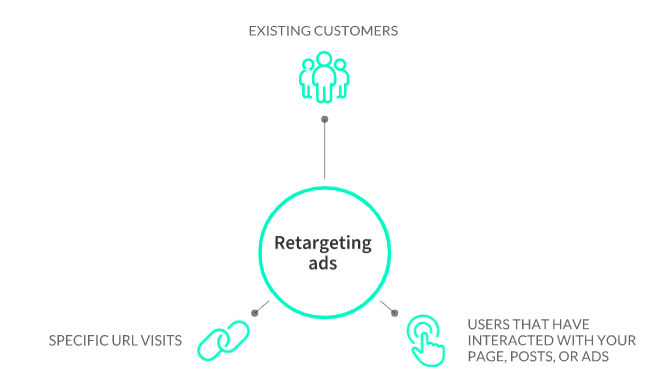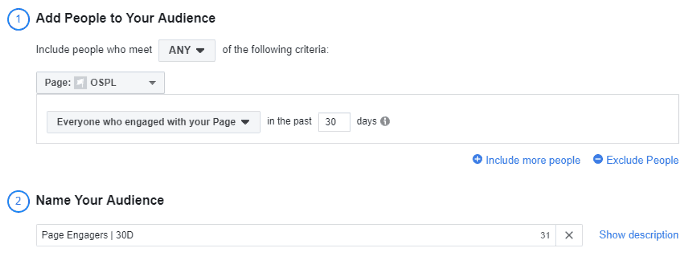The eCommerce market in Singapore is enormous. According to reports, Singapore’s eCommerce market would be worth S$7.5 billion by 2025, five times its current size. Today, it is evident that social media marketing in Singapore is the driving force of online commerce. Singaporeans are heavy shoppers, with 80% of Singaporeans have purchased a product online, and this number is set to increase year on year. Social commerce in Singapore has gotten to a whole new level. Many businesses, small to large scale, turn to advertise on social media not just to drive traffic and brand building, but to drive conversions directly on channels such as Facebook and Instagram.
According to a new study from iKala, in Southeast Asia, orders via social media more than doubled, while gross merchandise value (GMV) jumped three-fold. The research also sheds light on another rapidly growing trend: live-selling or the broadcasting of live videos featuring goods or brands. Overall, the number of live sales in the area increased by nearly 13 percent to 67 percent, thanks in part to shoppers in Singapore and Thailand who spent more time interacting with merchants and purchasing through live streams, in addition to shopping once a week on social media on average.
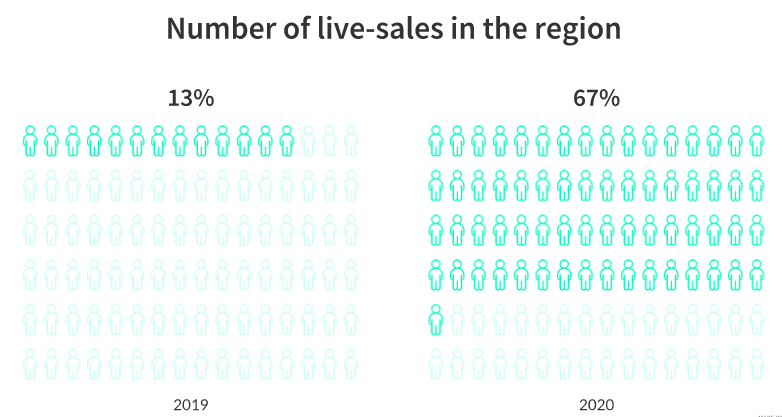
The benefits of social commerce in Singapore are obvious for retailers, but shopping on social networks comes with its own set of challenges. Trust, fraud, and a lack of familiarity, according to the report, are proving to be significant barriers for retailers in the area. They must find ways to make the shopping experience live, interactive, and seamless if they are to truly succeed. Here is the practical guide to drive conversions via social media marketing in Singapore for your business:
1. Integrate Shopping Feature on Facebook & Instagram
“Because of the increased use of social media on smartphones and social media’s involvement in retail sales, Social Selling has become red hot. Anyone hoping to improve their online sales success must take advantage of emerging trends.” – Eddie Machaalani, co-founder and co-CEO, Bigcommerce
And he was right (of course!). Today, social commerce is one of the core focuses for most brands, not just in Singapore but worldwide.
To get started, the first step is to integrate your Facebook and Instagram shops. With Facebook and Instagram shops, you can create your very own virtual storefront on social media, sell directly from your Facebook and Instagram profiles, and sync products from e-commerce platforms such as Shopify or WooCommerce.
Shops make it very easy for businesses to sell their products straight from their social media accounts. This is the perfect solution for small to medium businesses that require a digital storefront. However, more established companies with large social media followings also benefit from integrating this feature as social commerce gains popularity.

With your Facebook in-app checkout and Instagram shopping ads set up, you are not only able to expose your brand to the massive potential customers on social media, but you can also tag your products to boost sales and increase your conversion rate as it allows the user to shop for your products without leaving the app.
🚀 Explore everything you need to know about the Instagram Checkout function for eCommerce.
2. Apply Actionable Steps for Each Stage of Your Funnel
A marketing funnel helps you know what is essential for you to influence consumers at a particular stage of the customer’s journey. A most common social media sales funnel, which applies to most businesses, consists of five phases:
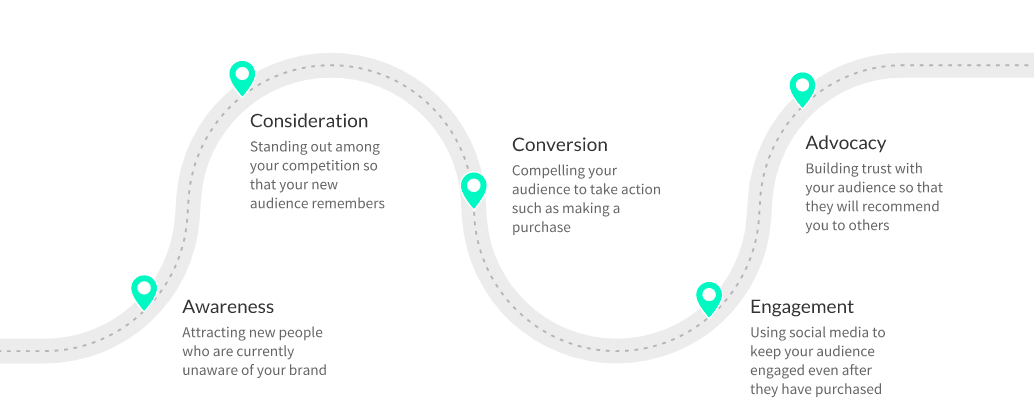
- Awareness – Attracting new people who are currently unaware of your brand
- Consideration – Standing out among your competition so that your new audience remembers you
- Conversion – Compelling your audience to take action such as making a purchase
- Engagement – Using social media to keep your audience engaged even after they have purchased
- Advocacy – Building trust with your audience so that they will recommend you to others
Incorporating the right strategies for each stage of the funnel into your customer’s journey is something that will help your brand continue to grow on social media. At specific stages, specific actions are required to monitor through specific KPIs. With the right strategy in place, you are also able to build a loyal fan base. These ‘fans’ will eventually become the ‘unpaid marketers’ for your brand to increase your brand’s awareness and conversions on social media.
3. Leverage User-Generated Content & Influencer Marketing
79% of consumers worldwide say that UGC influences their purchase decisions. According to Statista, 37% of Singaporeans rely on word of mouth to discover new brands. Remember, just as with traditional marketing, B2B or B2C, your consumers are your best brand advocates. Today, not only are customer reviews an essential part of your e-commerce product pages, but they should also be prominent on your social media profiles as more people are embracing the trend of social commerce.
User-generated content (UGC) works wonders as a modern-day digital word-of-mouth format that benefits both brands and consumers on social media in Singapore. UGC builds trust and authenticity for your brand. But more importantly, it acts as an amplifier to your brand’s social proof, which builds the confidence for your audience to purchase with you.
Brands aren’t the only ones that can profit from user-generated content campaigns. Singapore’s Tourism Board is running a user-generated content (UGC) campaign on their official Instagram account to promote the country’s tourism. The brand shares content from other users on the site while also crediting them for their images.
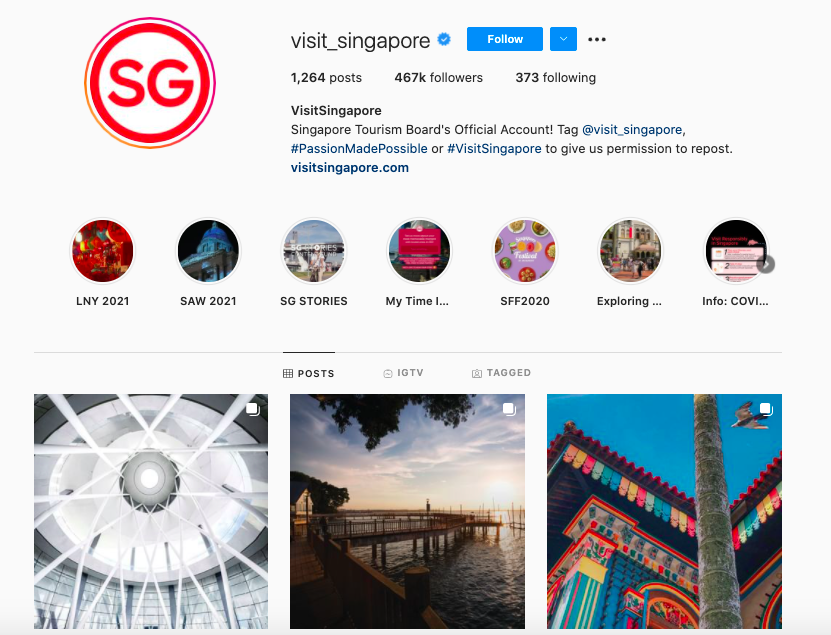
Visit Singapore asks their followers to tag them or use the hashtags #PassionMadeImpossible or #VisitSingapore to encourage users to repost their content, according to their Instagram bio. As a result, it successfully draws followers to their content on the site by using user-generated content (UGC).
💡 Expert’s Tip: One effective way to leverage UGC is to repurpose influencer content as ads for your business as it serves as social proof or product demo. Collaborating with the right influencers can aid in sparking the campaign. This is an effective strategy, especially if you are on a tight budget and plan to use UGC. Working with influencers followed by your potential buyers will trigger your brand awareness, engagement, and conversions.
️🔥 Discover our hot lists of influencers exclusively picked from in-house research 🇸🇬
- Top 5 Food Micro-influencers in Singapore
- Top 5 Mum Influencers in Singapore
- Top 5 Singapore Sports Influencers
- Top 5 Singapore influencers for automotive
4. Run Retargeting Ads on Social Media
Singapore social media statistics by Q3 2021:
- With 4.4 million Singaporean users, YouTube tops among all social media channels with the largest number of users.
- Over 4 million Singaporeans were active Facebook users, which accounted for 75% of the country’s entire population.
- More than 2.1 million Singaporeans are on Instagram, which is 34.4% of the country’s population. (Young Singaporean social media users)
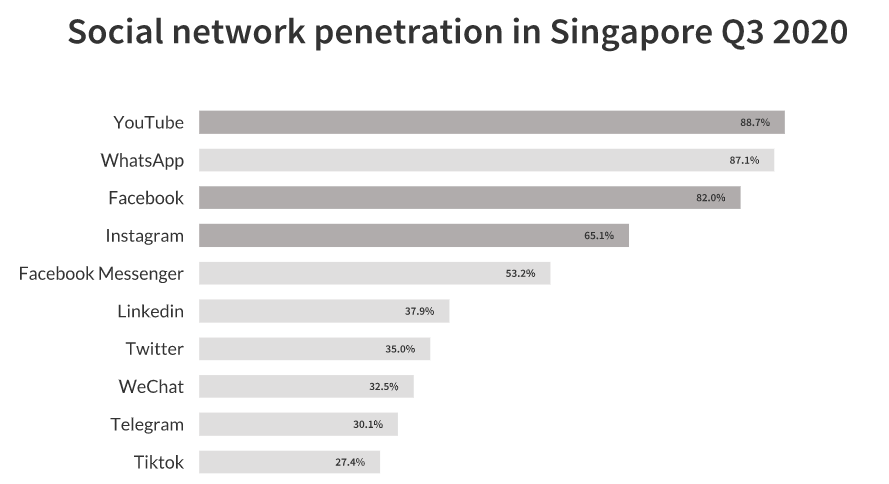
Did you know that 36% of Singapore people rely on Social Media ads to discover a new brand? Some of the most active platforms are Facebook, YouTube, Instagram, and Twitter. Users visit these platforms to stream video content. Based on these statistics, it is obvious why they are the most powerful and ideal platforms for social media advertising in Singapore.
One of the most exciting things about it is that there is no limit to your ability to scale as fast as you want and to have your ads shown to your specific target audience. The most effective type of social media ads to drive conversions is retargeting ads. The click-through rate (CTR) of a retargeted ad is 10x higher than the CTR of a typical display ad.
Here are three of some of the most effective types of retargeting ads in Singapore that will help drive conversions from social media:
Retarget to existing customers
Retargeting existing customers can be done by uploading your current customer email list to your ads manager when creating a custom audience. Doing this may also help resurrect the unresponsive customers that have previously purchased from you but do not open the emails you send to them. This strategy can also be implemented to upsell or cross-sell to customers that have recently purchased from you. This method can be most effective for products that require a refill or repurchase after several months.
Retarget to users that have interacted with your page, posts, or ads
When a user has interacted with your account, the possibility of them having an interest in your brand or product is usually higher compared to users that have not. Engagement remarketing campaigns target “warm” audiences, 70% more likely to convert into a customer. These types of ads will see higher engagement and conversion rates as it capitalizes on the fact that your audience already knows of or about your business because they have previously interacted with your organic posts or other ads.
Retarget specific URL visits
You can retarget ads to users that have visited a specific page on your website. It could be a product or collection page. Creating product or collection-focused ads with dedicated landing pages specifically for this set of audiences will assist with driving conversions versus delivering generic ads to your website’s main web page.
🚀 Discover our simple guide on how to properly activate retargeting ads on social media.
5. Integrate an AR Experience
AR is a trend that gained popularity in 2019, and it has carried on into 2021 and will only continue to evolve in years to come. We have seen brands in Singapore integrate fun AR filters into their stories to bring their users a different social commerce experience.
However, some brands like NARS Cosmetics (@narcissist) have used AR technology to the next level by integrating an AR feature that allows their users to try on their makeup directly from their Instagram shop. This elevates the user’s experience and helps their potential customers decide on purchasing on the spot instead of going in-store to try out lipstick. There are also limitations to testing makeup due to the pandemic. This, therefore, helps with driving more conversions directly from their Instagram profile.
Previously, Qeelin, a fine jewelry brand, launched a Christmas campaign with an interactive AR filter that entertained audiences with an eye-blinking game. The initiative has successfully drawn engagement, encouraged sharing on Instagram stories, raised brand awareness, and provided gift inspiration during the season in a fun and playful way.
🚀 Discover how Qeelin raises awareness on their new product launch via branded gamified AR filter.
6. Live Streaming / Live Commerce
Live commerce has recently become increasingly popular and has impacted commerce on social media in Singapore over static e-commerce pages. It provides customers with a combination of digital and physical retail experiences. It presents businesses with the opportunity to have a dialogue with their customers, which aids in strengthening the customer relationship.
The social element of interaction in a live stream also allows you to entertain and inform your viewers about new products and to answer any questions about product usage with the ultimate intention to drive conversions. For businesses looking to jump on the live streaming bandwagon, engaging the audience is key.
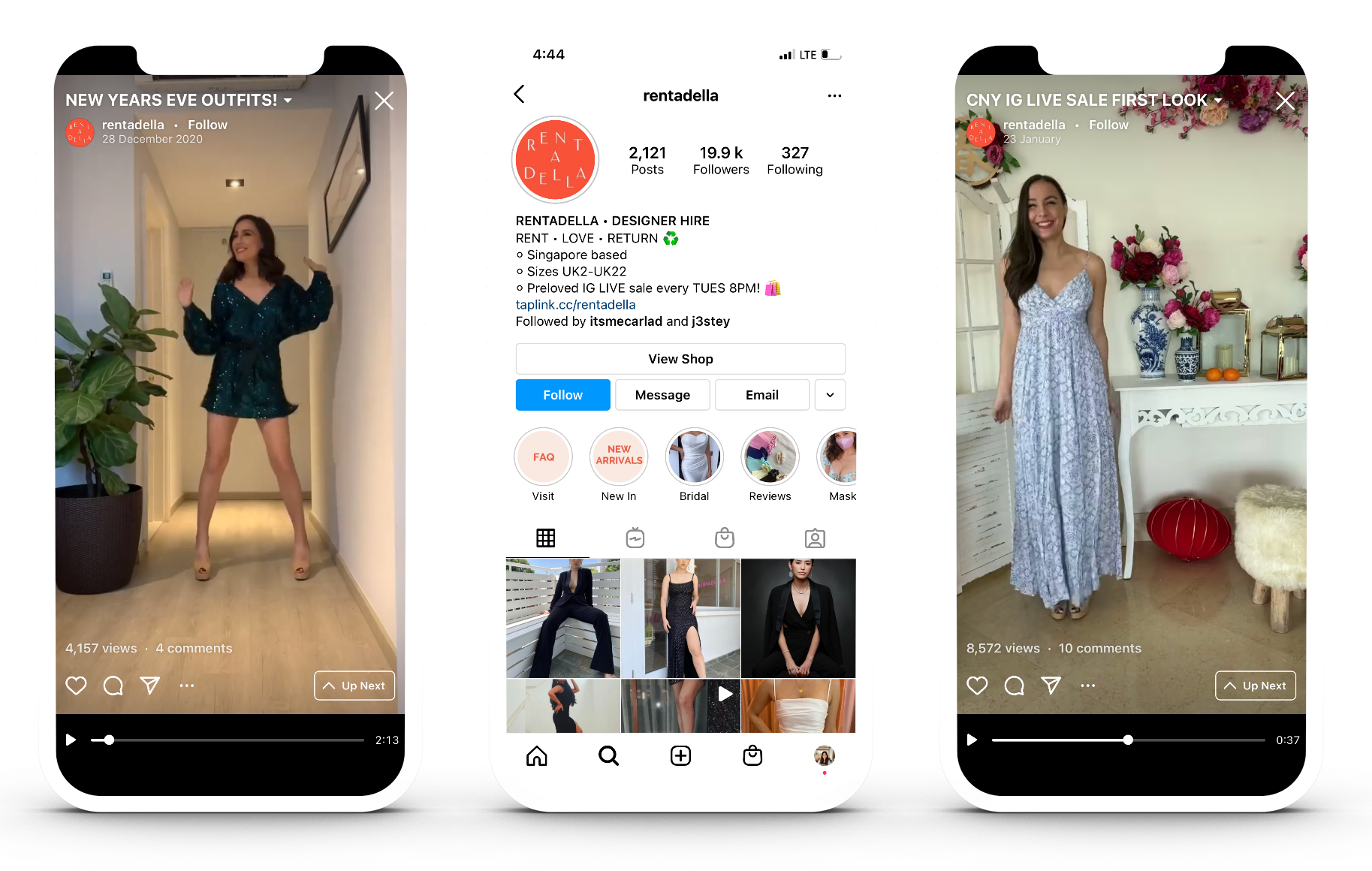
@Rentadella is a Singapore local fashion brand that holds an IG LIVE sale every Tuesday night in auction format for clothes, which is a smart and effective way to drive high engagement from followers.
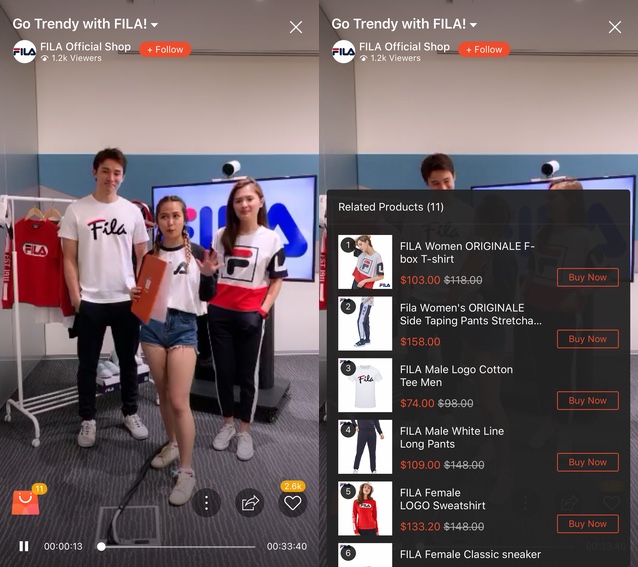
💡 Expert’s Tip: One of the most effective strategies to live streaming in Singapore is to collaborate with influencers who have the power to captivate the audience. Influencers can leverage their brand to promote products through interactive live streaming, which can be done concurrently on both the influencer account and your business account. Live streaming and influencer marketing can help drive awareness and provide the highest conversion rate.
Live streaming is here to stay in Singapore. Facebook Live, Instagram Live, and YouTube Live are all effective platforms depending on your prospect demographics. Therefore, businesses need to start making it part of their social commerce strategy to drive conversions in Singapore.
🚀 Discover how to implement live streaming in your social commerce marketing strategy!
7. Contextualize your Call to Actions (CTAs) and make them prominent
In today’s social media world, profitability can be linked to more visitors, more clicks, and better audience engagements, leading to more sales. It is essential to make your CTAs a broader and more critical part of your marketing strategy as an effective CTA can do magic for your social media posts.
Ensure that your audience is being spoken to from a natural place by making your CTAs contextual. Doing this will help you drive more conversions as personalized CTAs convert 202% better than non-personalized CTAs.

💡 Expert’s Tip: Ensure that your CTAs are customized for the audience that you would like to communicate with to take the following action. Running A/B tests for your call to action on your social media post can help you see what works best for your audience at the different stages of your funnel.
8. Use Data to Strategize
When you use analytics in social media, you will gauge how effective your strategies are and how you need to improve your conversion rates. Suppose you are not performing any form of analysis or tracking your social media conversion rates. In that case, you will be unsure as to whether you are implementing the correct strategies or not. Tracking allows you to identify areas that require improvement. You would also be able to determine your highest performing social media channels, posts, and the specific regions where you might need to put in more effort or allocate more resources.
Google Analytics is a valuable tool to monitor your social media conversions. Such analysis will help you with tieing the results with your campaign objectives and identify if you are on the right track or not.
With more businesses prioritizing social media marketing in Singapore, it has now become a very competitive landscape. Therefore, creating content is only one aspect of effective marketing on social media. Priority should also be placed on implementing the right strategies to amplify your brand and content to drive social media conversions.
Having the above marketing tactics to increase your social media conversions is essential to attract customers from social media. If you follow these tips, you are likely to have more than just an increased number of followers, but also end up with an increase in sales revenue for your business.
🔎 Explore our social media market research in Singapore 🇸🇬
- ① Cultural social media insights in Singapore
- ② Social media marketing in Singapore
- ③ Online marketing in Singapore


